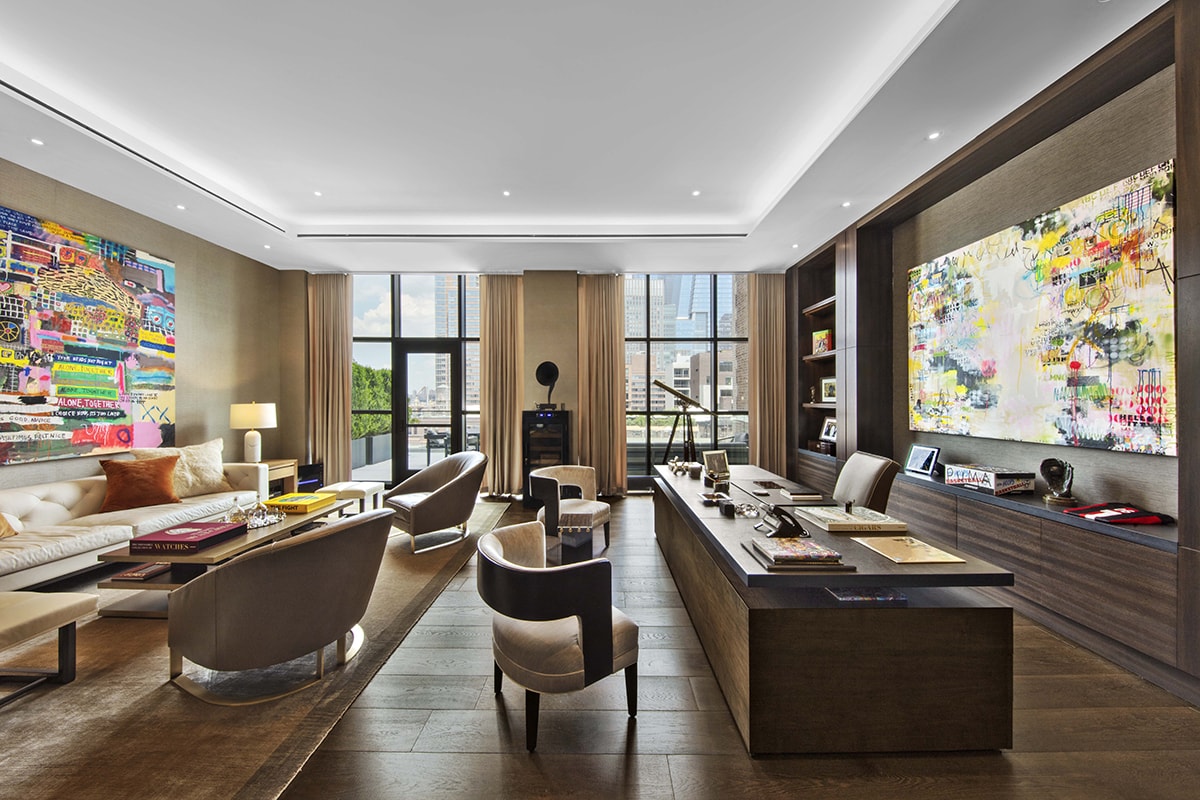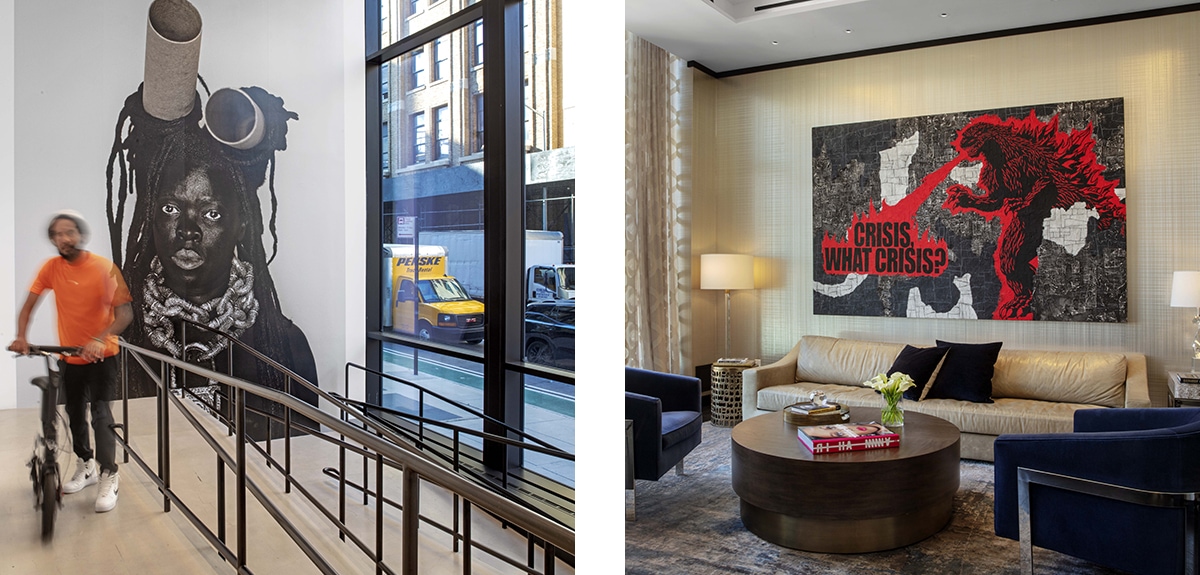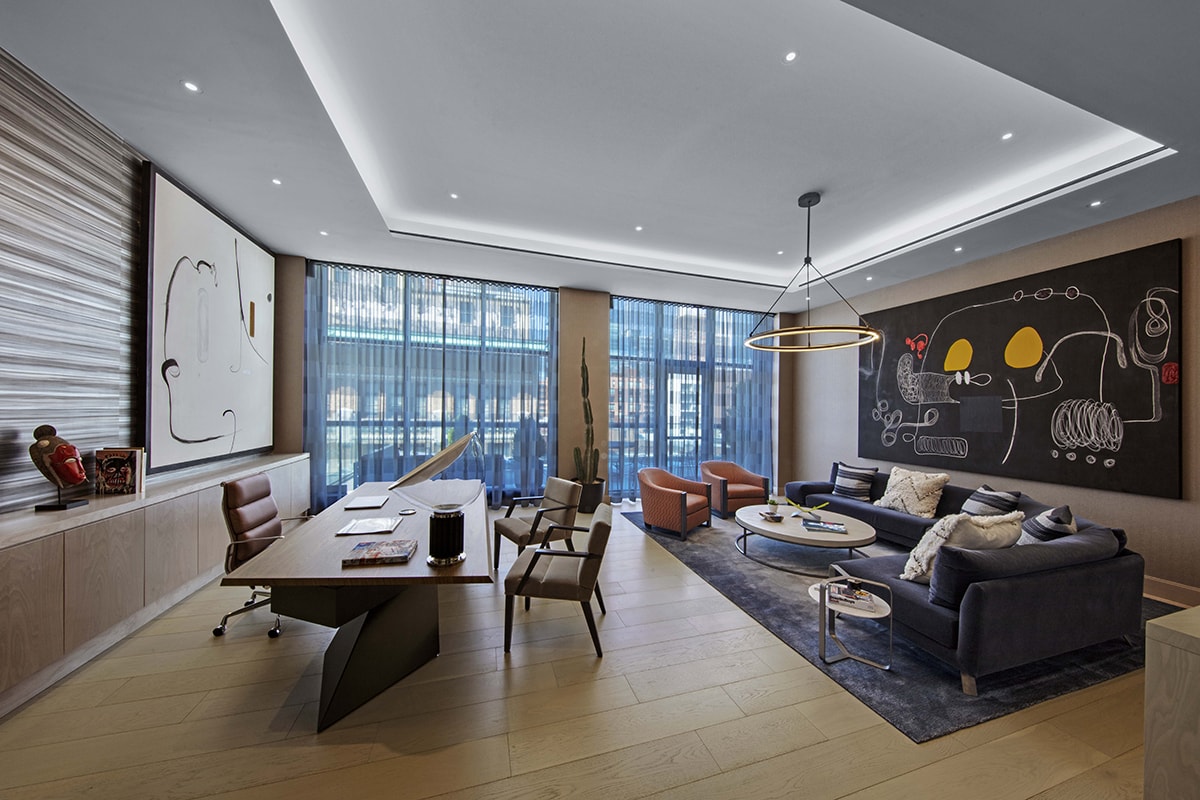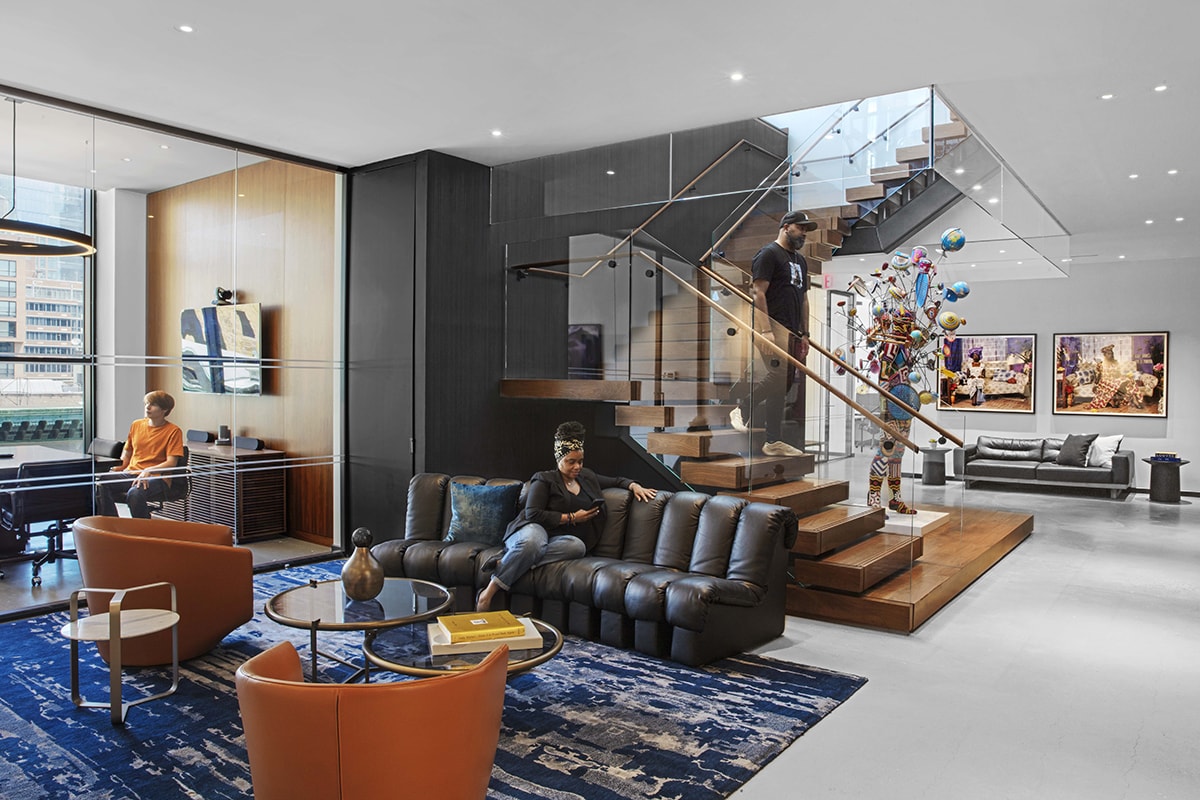School of Roc
Designer Jeffrey Beers reimagines the office concept for Jay-Z’s Roc Nation headquarters in Chelsea.

Roc Nation Sports President Juan Perez chose colorful, bright features for his personal office, including “Alone Together II,” a work by expressionist and pop artist Eddie Love. The space is balanced with custom walnut wood millwork and black granite accent stone, and lounge chairs by Holly Hunt flank the seating area.
Very few artists earn the title of changemaker. Jay-Z, however, has built a career on changing the game across every platform he touches, and he can now add the design of his new headquarters for Roc Nation—his sprawling entertainment company that includes artists, athletes, publishing, film/TV and many other ventures—to his list.
In collaboration with architect Jeffrey Beers—with whom Jay-Z and Roc Nation’s CEO Desiree Perez envisioned and developed their 40/40 Club—the office move from New York City’s Garment District into a sprawling 29,000 square foot office space across four floors in the heart of Chelsea, essentially reinvents the modern, post-Covid era office. “We transcend culture for a living,” explains Perez. “The design had to fit our style, yet also allow us to work comfortably.”
The result is an airy, bright space punctuated by beams of natural sunlight. It’s meant to cultivate an aura that reads more hidden downtown art gallery than office. “We were inspired by the incredible art collection,” says Jeffrey Beers of Jay-Z’s world-class acquisitions, which include “vibrant album covers, an incredible array of artist photography, athlete jerseys and paraphernalia, as well as Paper Planes apparel,” all of which take center stage throughout the company’s four floors.

Jay-Z chose the large-scale, black-and-white portrait by South African artist and human-rights activist Zanele Muholi to grace the ground floor side entrance (left).
“I’m simple in terms of my personal style, and I wanted Jeffrey to create something strong and non-gender specific, while still being a little edgy,” says Perez of her personal office (right), filled with rich textures, art tomes and contemporary art, all without a hint of corporate pretension.
“We used the art collection as the anchor to create a look that mirrored creative collaboration and bold artistry.”

A massive painting by Christian Rosa anchors the office of Roc Nation co-founder Tyran “Ty Ty” Smith. Under it, the seating area includes a velvet-clad sectional and lounge chairs by Holly Hunt.
“Once Desiree described Roc Nation’s bold, fearless and creative client culture, we instinctively understood how the look and feel of the office should develop,” explains Beers. “We used the art collection as the anchor to create a look that mirrored creative collaboration and bold artistry.”
Fortuitously, the layout’s wide open spaces and the emphasis on privacy from the get-go—individual, private offices; listening rooms and individual booths—all became areas to work and meet, according to Perez, in addition to large balconies and a rooftop. “This has helped with the distancing,” she explains.
Each of the four executive suites was customized to mirror its individual occupant. “We set out to create mini residences that spoke to the character and taste of each executive,” explains Beers. “We consistently used concrete flooring, walnut and blackened-steel paneling throughout the entire office for a uniform look.”

Calming blue tones and plush seating center the sixth-floor seating area while the walnut-and-glass floating staircase adds a sense of drama and intrigue. A “Soundsuit” by artist Nick Cave stands tall next to the staircase.
